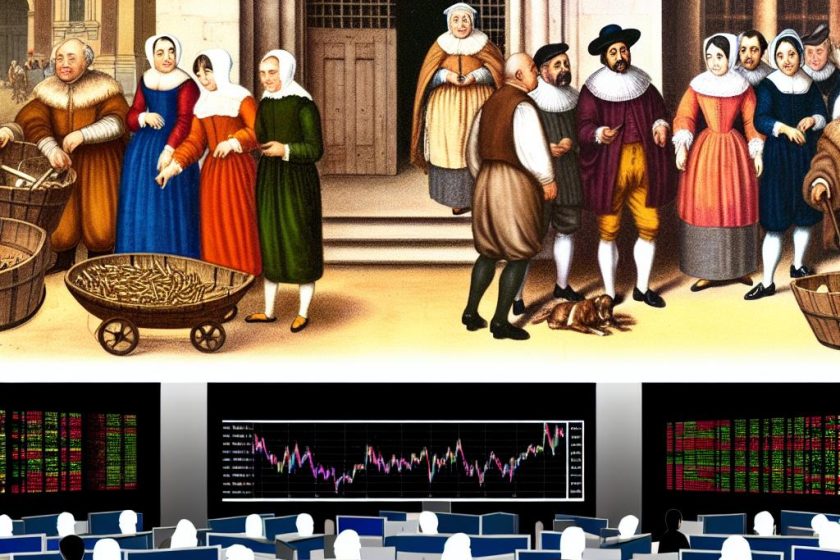Understanding the Basics
When contemplating investing in the stock market for the first time, it is essential to start with a solid understanding of the fundamentals. The stock market can be complex, but at its core, it is a platform where shares of publicly-listed companies are bought and sold. Companies issue stocks to raise capital, and investors purchase them with the expectation of earning a return on their investment. This initial understanding is crucial as it sets the groundwork for making informed and strategic investment decisions.
The Mechanism of the Stock Market
The stock market operates through exchanges, where traders buy and sell stocks. Major exchanges include the New York Stock Exchange (NYSE) and the Nasdaq. These exchanges provide a regulated, transparent environment where investors can trade stocks, ensuring fair pricing through supply and demand dynamics. Companies listed on these exchanges are required to adhere to strict reporting standards, providing investors with essential information about their financial health and business operations.
Benefits of Stock Market Investing
Investing in the stock market can potentially yield substantial financial benefits over time. Historically, stocks have offered higher returns compared to other types of investments such as bonds or savings accounts. This potential for high returns is a significant attraction for investors seeking to grow their wealth over the long term. Additionally, investing in stocks allows you to own a piece of the companies you believe in, supporting their growth while potentially benefiting from their success.
The ability to generate passive income through dividends is another advantage. Many companies distribute a portion of their profits to shareholders in the form of dividends, providing regular income in addition to potential capital gains. The power of compounding further amplifies the potential for wealth creation, as reinvested dividends and capital gains generate additional earnings over time.
Common Investment Types
There are several types of investments to consider when entering the stock market. The most common include:
Individual Stocks: Purchasing shares of specific companies that you research and believe will perform well. This method allows investors to focus on particular industries or companies they have confidence in, but it also requires more in-depth research and knowledge. Individual stock investments can be rewarding but come with higher risk as your portfolio’s performance heavily relies on the success of those companies.
Exchange-Traded Funds (ETFs): These are funds that track an index, commodity, or a basket of assets like stocks or bonds, much like a mutual fund, but traded on stock exchanges like an individual stock. ETFs offer diversification and are generally considered less risky than individual stocks as they spread investments across different securities. They are a popular choice for beginners due to their lower cost and ease of trading.
Mutual Funds: Managed investment funds that pool money from many investors to purchase a diversified portfolio of stocks, bonds, or other securities. Mutual funds are managed by professional fund managers, making them a suitable option for those who prefer a hands-off approach. They often come with management fees, and their performance can vary based on the expertise of the fund managers.
Steps to Get Started
1. Set Financial Goals
Before investing, it is imperative to set clear financial goals. Determine what you hope to achieve with your investments, whether it’s saving for retirement, buying a home, or simply growing your wealth. Having specific goals helps you maintain focus and discipline, ensuring your investment strategy aligns with your financial objectives.
2. Assess Your Risk Tolerance
Every investment involves some level of risk. Assess your risk tolerance to align your investment choices with your comfort level. Generally, younger investors with a longer time horizon can afford to take more risks, while those closer to retirement may prefer conservative investments. Understanding your risk tolerance helps in selecting appropriate investments that fit your risk profile, reducing anxiety and aiding in long-term planning.
3. Open a Brokerage Account
To purchase stocks, you will need to open a brokerage account. There are numerous online brokers available, each offering different services, fees, and tools. Compare these features to select the one that best suits your needs. Many brokerage firms now offer accounts with no minimum balances and commission-free trades, making it easier for beginners to enter the market. Research the reputation and customer service of brokerage firms to ensure you choose a reliable platform.
Choosing the Right Investment Path
When deciding on an investment path, consider your financial goals, risk tolerance, and the amount of time you can commit to managing your investments. Some individuals prefer to invest in actively managed portfolios that require regular monitoring and adjustments, while others may opt for a passive approach using index funds or ETFs, which typically require less management. Your choice should reflect your lifestyle, financial goals, and comfort with financial markets.
Research and Analysis
Conduct thorough research before making any investment decisions. Evaluate the companies you are interested in by analyzing their financial statements, market position, and growth prospects. Utilize resources such as stock analysis tools and financial news platforms to stay informed about market trends and company performance. Fundamental and technical analysis are key approaches used by investors to assess stocks and make strategic decisions, ensuring you make informed choices supported by data and insights.
Taking Advantage of Educational Resources
Many brokerage platforms offer educational resources that can help you understand market concepts, strategies, and more. Take advantage of these tools to enhance your knowledge and confidence as an investor. Online courses, webinars, and tutorials can provide valuable insights into investing strategies, risk assessment, and market analysis, helping you build a solid foundation for your investment journey.
Diversification
One of the fundamental principles of investing is diversification, which involves spreading your investments across various asset classes and sectors to reduce risk. By not putting all your eggs in one basket, you can minimize the impact of a poor-performing investment on your overall portfolio. Diversification helps in achieving a more stable return by offsetting losses from one sector with gains from another, enhancing the resilience of your investment portfolio.
Monitoring Your Investments
Once you have built your portfolio, regular monitoring is crucial. Stay updated on market conditions and company news to make informed decisions about the performance of your investments. Rebalance your portfolio periodically to ensure it aligns with your financial goals and risk tolerance. This process involves adjusting your asset allocations to maintain your desired risk level, reflecting any changes in your financial situation or market dynamics.
By following these steps and maintaining a disciplined approach, you can lay a solid foundation for investing in the stock market for the first time. For further reading, consider exploring financial news platforms or educational resources from trusted financial institutions. Remember, successful investing requires diligence, patience, and a long-term perspective focused on achieving your financial milestones.




